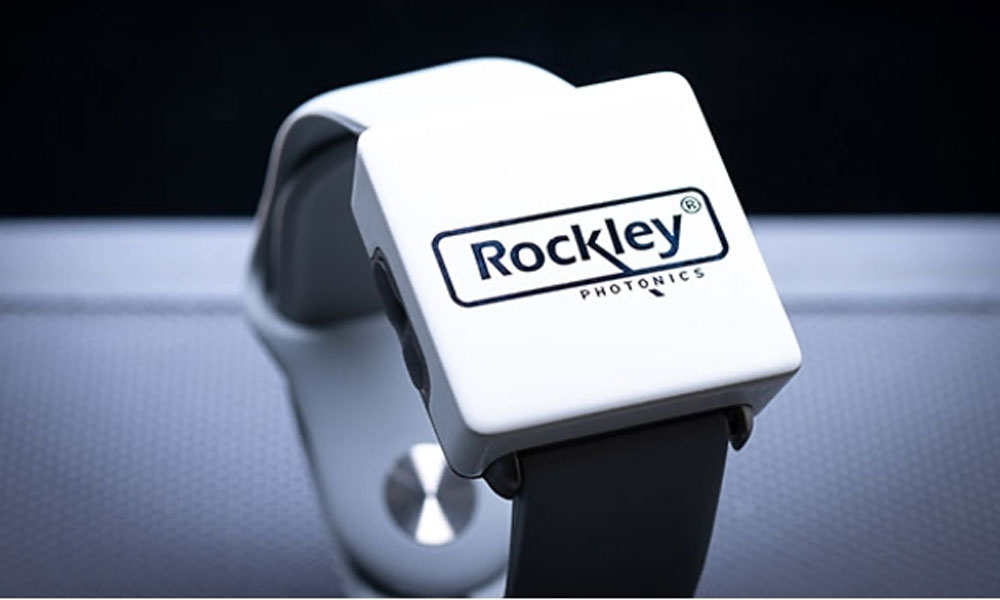Major Apple Partner Testing Blood Glucose Sensors for Apple Watch
 Credit: Rockley Photonics
Credit: Rockley Photonics
Toggle Dark Mode
From Apple’s perspective, the Apple Watch is far more than just a way to tell the time and get notifications on your wrist. The company’s executives have stated on several occasions that Apple wants to make a big impact in improving people’s health and wellness, and the Apple Watch is clearly a core part of those ambitions.
Hence, it’s no surprise that Apple has been pouring billions of dollars into health research over the past few years, much of which is focused on finding new ways for the Apple Watch to measure important health metrics.
For example, heart rate monitoring was there from the very first model — and was helping to save lives almost from day one. Apple later expanded that into other important sensors like ECG and irregular heart rhythm monitoring on the Apple Watch Series 4, and most recently a blood oxygen sensor in the Apple Watch Series 6.
However, Apple has shown no signs of slowing down, and we already know that it’s working on blood pressure sensors, a new body temperature sensor, and — what many people consider to be the “holy grail” of medical technology research — non-invasive blood glucose monitoring.
After all, a solution for non-invasive blood glucose monitoring is something that would change the lives of hundreds of millions of people overnight. For more than 34 million people in the US alone, being able to take accurate blood glucose measurements to manage diabetes would be a welcome relief from the several-times-daily routine of drawing blood and inserting strips into an electronic measuring device.
However, that one is a really tough nut to crack.
Medical researchers have been working on it for close to 50 years now, and have spent hundreds of millions of dollars. Yet with all of this time, and money, and research, nobody has yet come up with a solution that’s accurate enough to produce a clinically or commercially viable product.
As a multi-trillion dollar company, however, Apple has the kind of resources to bring to bear that few others can rival, and considering Tim Cook’s comments that he wants healthcare to be one of Apple’s most important legacies, it also has the will to do so.
While Apple has been working on this for a while already, it looks like the company may be on the cusp of a viable solution, thanks to one of its previously secret medical technology partners.
Blood Glucose, Blood Pressure, and Blood Alcohol Level Sensing | Rockley Photonics
Earlier this year, Rockley Photonics, a relatively small health-tech company in the UK, disclosed its long-standing relationship with Apple as part of the SEC filings it was required to make in preparation for going public.
Those filings revealed that Rockley’s largest customer by far over the past two years has been none other than Apple, and that the “ongoing supply and development agreement” between the two companies is expected to continue into the foreseeable future.
According to Rockley’s CEO, Dr. Andrew Rickman, Apple pays large sums of money as engineering fees related to work on future products.
What’s significant about this is that Rockley’s major area of research is developing ultra-accurate sensors for tracking blood glucose, blood pressure, and blood alcohol levels.
Back in May, Dr. Rickman also added that he expects his company’s technology to find its way into at least one new consumer product next year. Although naturally, he didn’t say anything about which product that would be, it’s not hard to imagine what’s going on here, considering the tight relationship between Apple and Rockley.
Now, it appears that Rockley has actually launched its first digital health monitoring solution — a comprehensive “clinic-on-the-wrist” that can “monitor multiple biomarkers, including core body temperature, blood pressure, body hydration, alcohol, lactate, and glucose trends, among others.”
To be clear, however, this wrist-worn monitor is not a commercially available product. Instead, Rockley intends to use it for research and development to perfect the sensing technology and move toward regulatory approval.
Rockley’s full-stack sensing solution features a wristband that contains the sensor module and communicates with custom cloud-based analytical engines via a Rockley smartphone app. The wristband will be used in a sequence of in-house human studies in the coming months.
Without naming names, Dr. Rickman explains that this new wearable is a “reference design” intended to be used as a template for companies like Apple to deploy these sensors in products like the Apple Watch.
Perhaps the most telling sign, however, is that Rockley is clearly using an Apple Watch Sport Band in its photos of the new sensor.
For now, however, the sensor will simply communicate with a dedicated smartphone app for its clinical trials, and appears to have no direct integration with Apple’s HealthKit frameworks yet.
The fact that Rockley now has a wrist-worn sensor package ready for testing means that we could be much closer to advanced blood glucose monitoring than we’ve ever been, but we also shouldn’t expect it to arrive on an Apple Watch anytime soon.
There’s still a long road ahead, not only in conducting numerous trials to confirm its accuracy and reliability, but also getting the technology down to a size where it can fit into an Apple Watch.
After all, Rockley’s current product is already noticeably thicker than Apple’s wearable, and it doesn’t even include a screen. Further, Bloomberg’s Mark Gurman recently shared that although the Apple Watch Series 7 could gain a body temperature sensor this year, an accurate non-invasive blood glucose sensor is still several years away.






